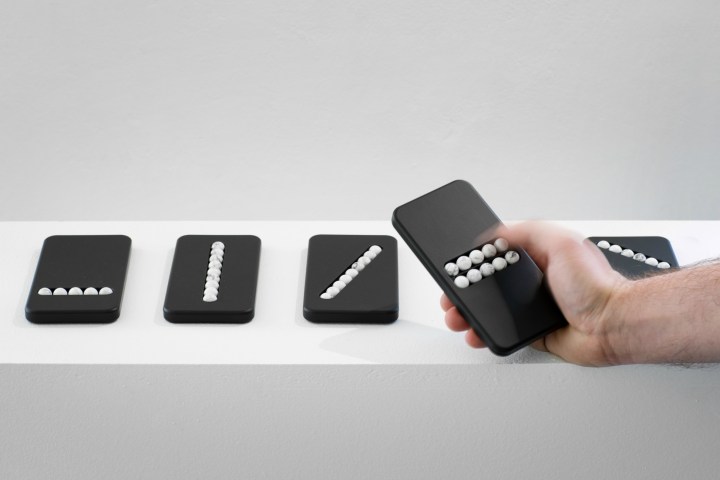
However, there are other reasons we’re constantly swiping and tapping our phone screens. The simple act of doing so can be enjoyable for some people, and can give you something to do with your hands even if you don’t really want to be connected all the time. If you’ve ever wanted to play with your phone while not actually using your phone, then Klemens Schillinger’s Substitute Phones may be just what you need.
The Substitute Phone made of high-quality, heavy-duty plastic designed to mimic the look and feel of a traditional smartphone. The devices feature stone beads which are designed to simulate the various gestures one would make on their smartphone. In a way, you can think of them as phone-shaped fidget spinners. They fulfill the same tactile urge to touch and swipe that your actual smartphone does, but will give you a break from the constant text messages and notifications.
“The object, which some of us describe as a prosthesis, is reduced to nothing but the motions,” the product description reads. “This calming limitation offers help for smartphone addicts to cope with withdrawal symptoms.”
While speaking with Dezeen, Schillinger said that the device had two inspirations. The first was the large amount of time he spent looking at his smartphone even when he didn’t necessarily want to use it. The second was writer Umberto Eco who, when attempting to quit smoking, substituted his pipe for a stick in order to simulate the sensation of holding a pipe without the nicotine.
“It was the same thing, but without the nicotine, just the physical stimulation,” he told Dezeen. “I remembered this and thought to make phones that would provide the physical stimulation but not the connectivity.”
The Substitute Phone is the second creation that Schillinger has created in an attempt to help explain our relationship with technology. The first was the Offline Lamp, which would only turn on when a smartphone-sized device was placed in its drawer.


